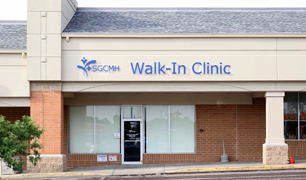How is Diabetes Treated?
There are certain things that everyone who has diabetes, whether type 1 or type 2, needs to do to be healthy. They need to have a meal (eating) plan. Also, They need to pay attention to how much physical activity they engage in, because physical activity can help the body use insulin better so it can convert glucose into energy for cells. Everyone with type 1 diabetes, and some people with type 2 diabetes, also need to take insulin injections. Some people with type 2 diabetes take pills called “oral agents” which help their bodies produce more insulin and/or use the insulin it is producing better. Some people with type 2 diabetes can manage their disease without medication by appropriate meal planning and adequate physical activity.
Everyone who has diabetes should be seen at least once every six months by a diabetes specialist (an endocrinologist or a diabetologist). He or she should also be seen periodically by other members of a diabetes treatment team, including a diabetes nurse educator, and a dietitian who will help develop a meal plan for the individual. Ideally, one should also see an exercise physiologist for help in developing a physical activity plan, and, perhaps, a social worker, psychologist or other mental health professional for help with the stresses and challenges of living with a chronic disease. Everyone who has diabetes should have regular eye exams (once a year) by an ophthalmologist to make sure that any eye problems associated with diabetes are caught early and treated before they become serious. Also, people with diabetes need to learn how to monitor their blood glucose. Daily testing will help determine how well their meal plan, activity plan, and medication are working to keep blood glucose levels in a normal range.
Diabetics Can See the Whole Picture with CGM
Diabetics hear a lot of talk these days about continuous glucose monitoring (CGM) and for good reason. The CGM gives valuable information on how your blood sugar fluctuates so you can fine-tune your diabetes care and meal plan.
Think of it like driving a car. Glucose levels are constantly on the move. Relying solely on fingersticks for checking your glucose is like being blindfolded and only peeking every once in a while — this is just not enough visibility, especially if your diabetes is not under control.
If you are one of the estimated 1,381 diabetics in Ste. Genevieve ask yourself these questions:
- Is your diabetes under control?
- Is your A1C above the recommended 7%?
- Are you having episodes of hypoglycemia or low blood sugar?
- Have you had diabetes ketoacidosis or unexplained high blood sugars?
- Are you having high blood sugars after you eat a meal?
- Do you have gestational diabetes?
If the answer is yes to any of these questions, it is important to monitor your condition regularly.
The CGM has a sensor inserted just under the skin on the abdomen and is worn discreetly under your shirt for 72 hours. The simple insertion procedure is done at the hospital. The continuous glucose monitor is easy to use and usually takes about 20 minutes to insert the tiny catheter and train you on its use.
To calibrate the monitor, you must check your blood sugar four times per day. We teach you how to document your blood sugars, exercise sessions, and food intake, and make sure you’re comfortable with wearing the monitor before you leave for home. While you are wearing the monitor it will take 288 glucose readings per day and save a glucose measurement every 10 seconds. Daily fingerstick measurements represent but a few minutes of the day, and do not show the direction or trend of your blood sugar. This allows fluctuations to be missed, especially at night.
At the end of three days, the information is down-loaded to the computer and is organized into charts, graphs and tables. Your primary care practitioner can then use this information to make medication changes, evaluate behavioral changes, and identify the effect of food, exercise, medications and insulin on your blood sugar numbers.









